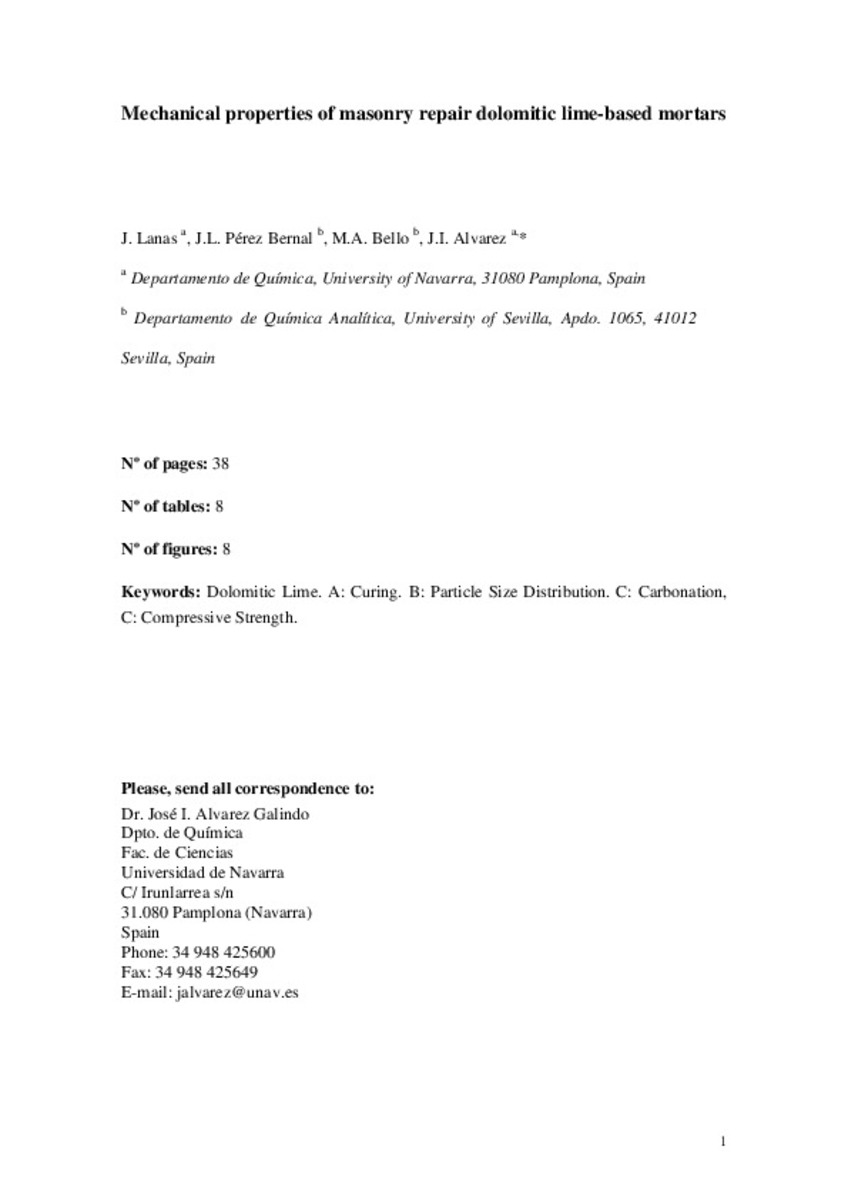Mechanical properties of masonry repair dolomitic lime-based mortars
Palabras clave :
Dolomitic lime
Curing
Particle size distribution
Carbonation
Compressive strength
Fecha de publicación :
may-2006
Cita:
Lanas J, Pérez Bernal JL, Bello MA, Alvarez JI. Mechanical properties of masonry repair dolomitic lime-based mortars. Cem Concr Res 2006 5;36(5):951-960
Aparece en las colecciones:
Estadísticas e impacto
0 citas en

Los ítems de Dadun están protegidos por copyright, con todos los derechos reservados, a menos que se indique lo contrario.











